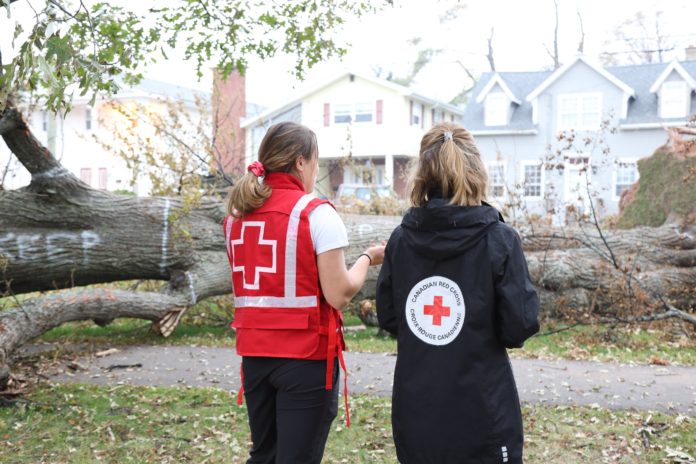Governments need to take the lead to prepare communities to help withstand major weather events like Fiona that lashed the Atlantic region, according to an environmental science professor at St. Thomas University.
“So far, governments have not been there,” said Janice Harvey. “They will come in, make the rounds, do the photo ops and promise money to help people rebuild, but that’s disaster relief, it’s not long-term planning and investing in adaptation.”
Hurricane Fiona, which became a post-tropical storm when it made landfall in Nova Scotia, brought catastrophic damage to Atlantic Canada in the early morning hours of Sept. 23.
“Cimate change has resulted in rainier and windier hurricanes,” reads a statement from Environment and Climate Change Canada. There are also indications that hurricanes move slower and perhaps are able to reach further north with warming.”
Residents awoke on Sept. 24 to uprooted trees, blown-down houses, downed power lines and power outages that would last, in some cases, weeks. A tweet by Nova Scotia Power said 415,000 customers were left without power.
Harvey, an assistant professor who coordinates the environmental science program at the STU, said the fingerprints of climate change were all over Fiona.
“We are absolutely able to say that the strength, intensity and scale of the storms we’re seeing now are driven by a changing climate.”
Harvey said hurricanes are strongest in the tropics where warm waters sustain them but weaken when they hit the colder waters in the north. The rising water temperatures in the north keep the storms energized for longer as they move further along the coast.
That is why Atlantic Canada was hit with record-breaking winds and rainfall.
In the wake of the storm, landmarks such as a 300-year-old Shubenacadie Tree in Nova Scotia and Prince Edward Island’s Teacup Rock sandstone formation were lost.
Houses were destroyed in Cape Breton, P.E.I., and most notably Port Aux Basques, Nfld., where several were blown down by winds and swallowed by the sea.
“I think at some level we’re all going to be grieving if we’re not [already] grieving over what we have lost or what we will [lose] because we’re going to see changes going forward that are going to be very hard to deal with,” said Harvey.
Harvey said climate grief and climate anxiety are real and should be taken on as an active issue by the mental health community.
She said one way to mitigate these feelings is to engage in climate change action by demanding government representatives work towards dramatically decreasing emissions and transition to 100 per cent renewable energy.
Harvey added governments should also fund proactive measures to help communities be as prepared as possible when weather extremes hit.
“There are very specific things that communities can do, and governments need to pay for that,” she said.
This article was published in partnership with the Local Reporting, Global Media class at St. Thomas University and The Aquinian, St. Thomas University’s official student publication.

